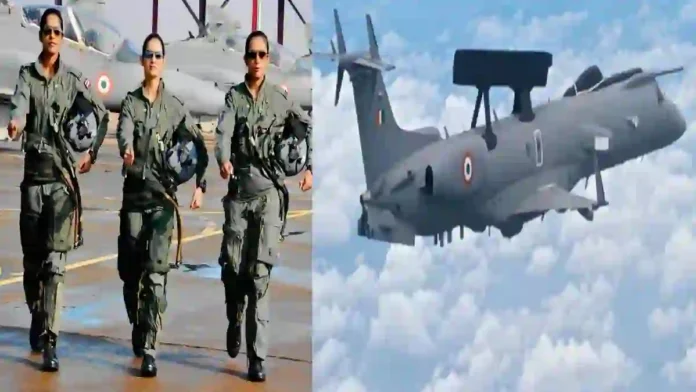The Indian Air Force (IAF) is poised for a significant leap in its operational capabilities as the Defence Ministry prepares to approve a ₹10,000 crore project for acquiring state-of-the-art I-STAR (Intelligence, Surveillance, Target Acquisition, and Reconnaissance) aircraft.
This initiative, expected to receive high-level clearance later this month, comes amid heightened military activity under Operation Sindoor against Pakistan. The I-STAR project involves procuring three advanced aircraft from leading global manufacturers such as Boeing or Bombardier. These airframes will be outfitted with fully indigenous sensor and electronic systems developed and tested by the Defence Research and Development Organisation’s Centre for Airborne Systems (CABS).
The indigenous systems are designed for multi-spectral surveillance, enabling the detection, location, and tracking of enemy assets—including radar sites, mobile air defence units, and command posts—with high precision, day or night, and even in challenging terrain.
Once operational, the I-STAR aircraft will provide the IAF with a dynamic, real-time battlefield picture, allowing for pinpoint strikes on critical enemy targets from stand-off ranges—without crossing into hostile airspace.
Read- China’s 50% Discount On J-35A Stealth Jets To Pakistan Sparks Fierce Online Backlash
Read- Rudram-2, Rudram-3, Rudram-4 Missiles Under Development
This capability is crucial for modern warfare, where minimizing risk to assets and personnel while maximising operational impact is paramount. The aircraft will support intelligence gathering, real-time surveillance, targeting, and reconnaissance (ISR), significantly enhancing India’s ability to conduct surgical strikes and limit the scale of conflicts.
The I-STAR system integrates both airborne and ground-based segments, offering comprehensive intelligence processing, exploitation, and dissemination. This will generate a common operational picture for Indian forces and provide a decisive edge in strategic operations across volatile regions. The technology has already been validated, ensuring swift integration and deployment once the platforms are acquired.
The induction of indigenous I-STAR (Intelligence, Surveillance, Target Acquisition, and Reconnaissance) planes is set to fundamentally transform India’s strategic surveillance capabilities in several critical ways.
First, these high-altitude platforms will provide the Indian Air Force with detailed, real-time air-to-ground intelligence, enabling the precise detection, location, and tracking of enemy assets—including radar stations, mobile air defence units, and command posts—even in complex terrain and adverse conditions. This capability allows for pinpoint, stand-off precision strikes, significantly enhancing India’s ability to neutralize threats without crossing into hostile airspace, a key requirement in modern warfare.
Read- DRDO Actively Developing 300km Pinaka, To Be Inducted In 3-5 Years Says DRDO Chief
Second, the I-STAR system’s indigenous multi-spectral surveillance technology, developed by DRDO’s Centre for Airborne Systems, ensures round-the-clock, all-weather intelligence gathering, surveillance, targeting, and reconnaissance (ISR). The integration of these proven indigenous systems onto advanced aircraft will be swift, providing a dynamic, real-time battlefield picture and supporting rapid decision-making.
Third, by combining airborne and ground-based components, I-STAR will enable intelligence processing, exploitation, and dissemination, generating a common operating picture for Indian forces. This enhances coordination, reduces the risk of undetected threats, and supports swift retaliation in conflict scenarios, thereby strengthening national security preparedness across borders.
Finally, the deployment of I-STAR platforms will place India among a select group of nations—such as the US, UK, and Israel—with such advanced strategic air-to-ground surveillance and strike coordination capabilities. This not only boosts India’s deterrence but also demonstrates its growing technological self-reliance and strategic autonomy in defence.
With the induction of these platforms, India will join a select group of nations—including the United States, United Kingdom, and Israel—that possess such advanced airborne battlefield intelligence and targeting capabilities. Officials emphasize that the I-STAR project will not only bolster India’s deterrence and rapid retaliation abilities but also enhance national security preparedness and reduce the complexity of undetected threats across its borders.
Based On ET News Report
Agencies




